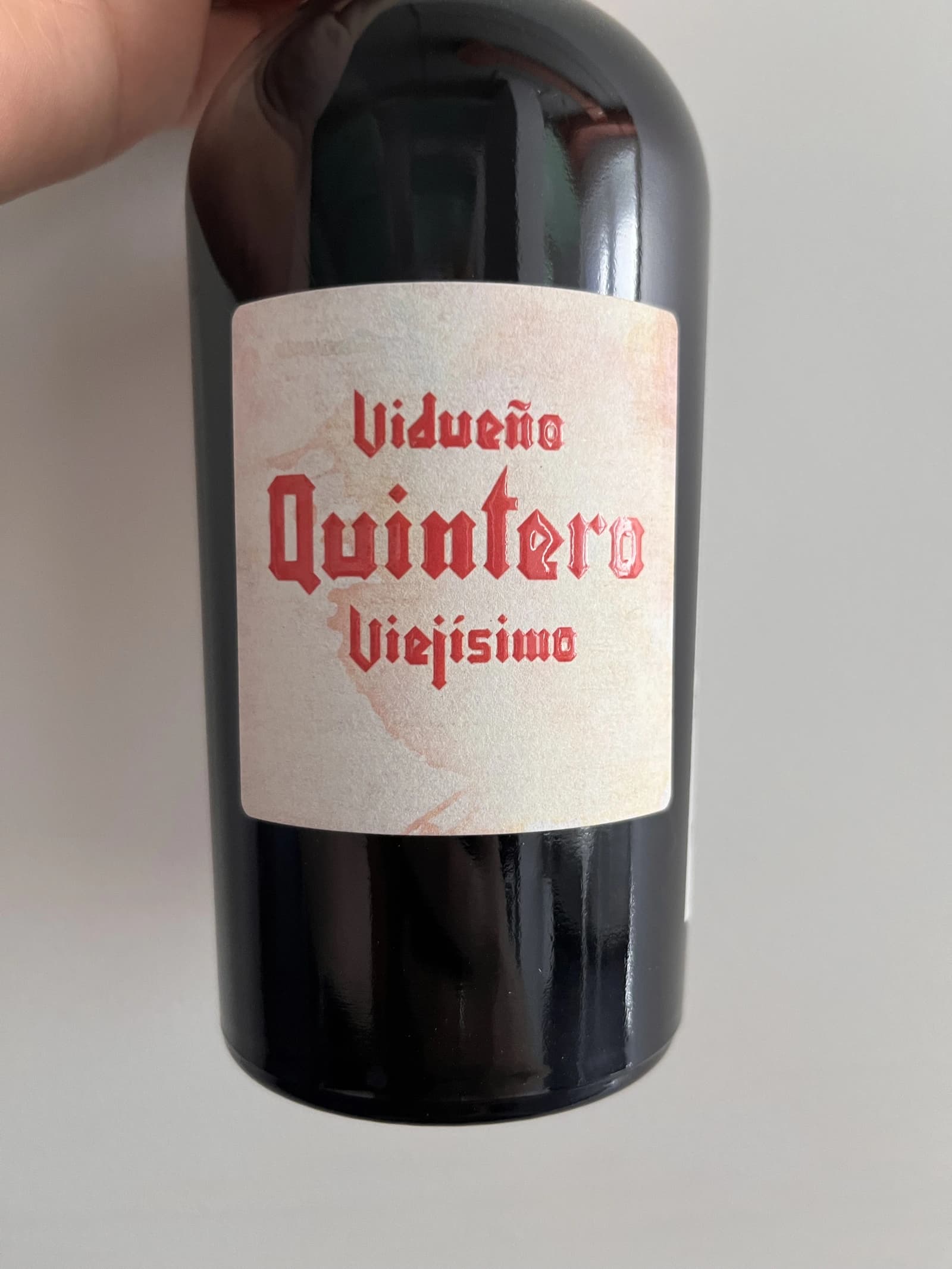Rosso Oslavia
Atypical venture to the kindgdom of Ribolla

Imagine being invited to sip some wine from Oslavia, only to find a suspiciously red liquid in your glass. Feeling a bit bamboozled? Is it a longing for common sense? Don't fret, this perplexity is perfectly normal because, let's face it, finding red wine in your glass when Oslavia is mentioned is nothing short of treachery (and remember, we're in Ukraine where folks are pretty adept at sensing 'zrada').
Let's be honest, to the average modern consumer, Oslavia is synonymous with amber wines. That's understandable, as Joško Gravner and Stanko Radikon are to thank for the worldwide renaissance of these wines (just don't bring this up with the Georgians). But what do we really know about Friuli's red wines? How often do we instinctively reach for them when discussing Friuli? Exactly my point.
But here's my confession: I have a latent love for red wines from Friuli. Yes, this is my coming out, and the very fact that this tasting is happening is proof enough. One fine day, the idea struck me - why not indulge in a Breg Rosso from the legendary Joško Gravner? I managed to acquire a bottle, but for some reason, just couldn't bring myself to open it. Then, a 1997 Merlot from Stanko Radikon, predating the switch to new bottle formats, fell into my hands (in exchange for some hryvnias). Wine tastings came and went, but these bottles patiently awaited their moment. And then came winter, with its snowfall and craving for warmth and simple joys.
Adding a bottle of Merlot from Dario Prinčič was a no-brainer (with no moral doubts). It's delicious (as proven repeatedly in blind tastings), well-crafted, unique, and fitting. Sadly, there'll be no more of this wine, as the vineyards are being uprooted (we're all waiting for the final late harvest release).
The real challenge was choosing the welcome drink and the final chord. Starting with something super interesting while everyone's still physically and mentally assembling - bad idea. Here, it's all about something refreshing and unobtrusive (haha). But what to drink after such a set? Fortunately, I had a rather unique bottle of sweet wine from El Hierro (Canary Islands) lying around. I know our society has a complicated relationship with sweet wines, but I'm ready to endure and fight for their recognition. Why is this bottle special? Read on, and let's move to the main event - the beginning of our journey.
Charles Heidsieck Brut Réserve (d2020) NV
- Region
- France » Champagne » Champagne AOC
- Type
- white traditional sparkling, brut
- Producer
- Vintage
- NV, based on 2016
- Disgorged
- 2020
- On lees
- 36 months
- Grapes
- Pinot Noir, Pinot Meunier, Chardonnay
- Alcohol
- 12
- Sugar
- 6
- Volume
- 750 mL
- Find at

This wine secured the 🏅 7th place in our wine tasting lineup.
This is a decent welcome drink that I found by accident. Great accident, I must say.
Dario Prinčič Cabernet Sauvignon 2007
- Region
- Italy » Friuli-Venezia Giulia » IGP Venezia Giulia
- Type
- red still, dry
- Producer
- Vintage
- 2007
- Grapes
- Cabernet Sauvignon
- Alcohol
- 15
- Volume
- 750 mL

This wine secured the 🏅 6th place in our wine tasting lineup.
Bonus bottle brought by Andrii S.
To be frank (also my name is Boris), there's not a wealth of information available about Dario Prinčič. The descriptions on this site are somewhat limited, boiling down to a few, rather arrogantly put, straightforward facts. He founded his winery in 1993 and, by the late 1990s, began experimenting with extended maceration techniques. Fast forward a bit, and his wines have made their way onto the shelves of Kyiv, allowing us to discover this remarkable winemaker.
Sometimes, there are vignerons whose stories captivate you with intrigue, often laced with struggle. Yet, their wines may not quite match up. This disconnect can be as uncomfortable as interviewing a nice person who doesn't quite fit the professional bill – I always find it hard to reject, despite my best efforts.
On the other hand, there are winemakers about whom little is written, but their wines speak volumes. This always wins me over. And while Dario Prinčič, like most from Oslavia, the kingdom of Ribolla, is better known for his white wines, I consistently find myself enamoured with his reds. It's not just about the emotions; they are genuinely delightful.
So, let's talk about the Cabernet Sauvignon from Dario Prinčič. It's only produced in the best years. Made with handpicked grapes, it undergoes a prolonged maceration process of 45 days and is aged nearly seven years in old French barriques. In a way, it's a dessert, but it's also the starting point of our journey through Oslavia. We'll have some cherries along the way.
By the way, Dario Prinčič decided to uproot Cabernet Sauvignon vines to replace them with white varieties.
Dario Prinčič Merlot 2007
- Region
- Italy » Friuli-Venezia Giulia » IGP Venezia Giulia
- Type
- red still, dry
- Producer
- Wine
- Vintage
- 2007
- Grapes
- Merlot
- Alcohol
- 14.5
- Volume
- 750 mL
- Find at

This wine secured the 🏅 4th place in our wine tasting lineup.
We are presented with a unique chance to draw a comparison between two closely related grape varieties. Both the Merlot and the Cabernet Sauvignon are crafted following a similar meticulous process. The grapes are handpicked and then undergo an extensive maceration period, lasting between 40 to 45 days. Following this process, the wines are aged for nearly seven years in old French barriques.
Gravner Breg Rosso 2003
- Region
- Italy » Vino
- Type
- red still, dry
- Producer
- Wine
- Vintage
- 2003
- Grapes
- Pignolo
- Alcohol
- 13.5
- Sugar
- 2.4
- Volume
- 750 mL
- Find at

This wine secured the 🥇 1st place in our wine tasting lineup.
One can have varied opinions about Joško Gravner and his wines, but it's hard to deny his profound influence on the world of wine. Reading about him is intriguing, a rarity among many winemakers. Perhaps it's the complexity of his character, his unwavering clarity of vision, that resonates with me. While more details about Joško Gravner can be found on a dedicated page, let's zoom in on the Breg Rosso 2003 here.
The year 2003 stands out for Gravner’s pivotal shift away from using barrels for white wine production. As we know, his initial foray into qvevri was somewhat ill-fated, with 9 of the 11 ordered from Georgia failing to survive the journey. Being a man of no half measures, Gravner eventually accumulated enough qvevri to phase out the barrels. However, the 2003 Breg Rosso was still crafted in barrels.
Breg Rosso 2003 is a testament to traditional methods, fermented on skins in wooden vats, utilizing wild yeasts without temperature control. Post fermentation, it underwent a lengthy four-year aging process in oak barrels.
The weather in 2003 was less than ideal, leading to a relatively meager harvest. Yet, according to Gravner, the quality of the yield was exceptional.
And the grape variety? Pignolo! This ancient, somewhat elusive red wine grape is indigenous to Friuli in Northeast Italy. It's celebrated for producing robust, deeply colored wines with impressive aging potential.
Pignolo's history in the region is extensive, but it nearly vanished by the mid-20th century, largely due to its finicky cultivation requirements. A late 20th-century revival saw local winemakers rediscovering and valuing native grape varieties, including Pignolo.
Renowned for its late ripening and vulnerability to vine diseases, Pignolo is a challenging grape to cultivate. Its tendency for low yields only adds to its rarity and often, the elevated esteem of its wines.
So there we have it, a mythical bottle of a rare and cherished variety – the Breg Rosso 2003ю
Radikon Merlot20 1997

This wine secured the 🥉 3rd place in our wine tasting lineup.
Another legend in the making. If you're reading this but haven't yet experienced Radikon's wines, then a meeting is urgently needed to rectify this regrettable oversight. The late Stanko Radikon played a pivotal role in the renaissance of macerated wines, and his legacy is skillfully carried on by his son, Saša. You can find a bit about them on our site, but today, let's focus on the distant year of 1997 (funnily enough, I was still living in Moldova then).
So, what's so special about 1997? It can't be discussed without mentioning the dreadful 1996, when a devastating hailstorm on the 19th and 20th of June obliterated an incredible amount of the crop. For perspective, Gravner harvested a mere 2 tons of grapes from 18 hectares. That’s minuscule – about 5% of the potential! Thus, 1996 became a year of experiments for these revolutionaries. And 1997? It was a logical continuation of 1996, as the plants were still recovering, leading to another lean harvest year.
But for us, the enthusiasts and connoisseurs of macerated wines, 1997 is one of the most crucial vintage of modernity on the timeline. It marks the beginning of experimental wines reaching the market (accounting for the time-consuming winemaking processes). This is where the story of new style's initial rejection unfolds.
Tasting this legendary year is so fascinating. And while I've hinted a lot at Gravner, here's a quote from Kevin at Bowler Wine about Stanko Radikon: 'His idea of wine is an ideal taste of recent memory, not a renaissance of ancient winemaking arts.' I find this comparison incredibly apt.
Specific details about this particular wine are scarce. But note this: it's in a 750ml bottle, indicating a bottling prior to the transition to 500ml and 1000ml bottles – a change Stanko made along with Edi Kante (more on this on our site). The '20' in the wine's name likely refers to extended maceration, in this case, 20 days. Although recent releases of Radikon's Merlot undergo 30 days of maceration, it seems back then, Stanko was just beginning to explore longer maceration periods.
In any case, this bottle is a piece of history we can touch. Wow. It's hard for me to keep writing; my emotions cloud my thoughts. Making me write reports for such mythical lineups should be prohibited by the Geneva Convention!
Bimbache Vinicola Quintero Vidueño Viejísimo L-19 NV
- Region
- Spain » Vino de Mesa
- Type
- white still, sweet
- Producer
- Vintage
- NV
- Grapes
- Verijadiego Blanco, Field Blend
- Alcohol
- 14.5
- Sugar
- 85
- Volume
- 375 mL

This wine secured the 🥈 2nd place in our wine tasting lineup.
After our eventful journey through the world of wines, I suggest we take a relaxing detour to the Canary Islands, landing specifically on the island of El Hierro. If you recall, we've ventured there not so long ago. But this time, I propose we indulge in something particularly special from this smallest of the Canary Islands.
Enter the NV Quintero Vidueño Viejísimo. This particular selection is from the glass demijohns that the Quintero family has meticulously preserved in their winery in Sabinosa. The wine hails from the first batch they bottled from a very old solera. Crafted with a blend of grapes, predominantly white varieties like Verijadiego Blanco, it's unfortified and born from overripe grapes. The wine has undergone extensive maturation in oak barrels, which aren't always topped up, lending it a distinctive oxidative character.
Doesn't this sound special? To me, it seems like a fitting companion to the wines we've journeyed through so far.
Egly-Ouriet Les Prémices (d2023) NV
- Region
- France » Champagne » Champagne AOC » Montagne de Reims
- Type
- white traditional sparkling, extra brut
- Producer
- Vintage
- NV, based on 2019
- Disgorged
- 2023-07
- On lees
- 36 months
- Grapes
- Chardonnay, Pinot Noir
- Alcohol
- 12.5
- Sugar
- 1
- Volume
- 750 mL

This wine secured the 🏅 5th place in our wine tasting lineup.
Just because something is over, doesn't mean we can't pop a bottle of delicious Champagne. Right?
Raw scores
Resources
- Gravner.
- The wines of Josko Gravner, Collio/Brda, Italy/Slovenia. Wine Anorak.
- Breaking with the Norm in Friuli, Italy – Josko Gavner Finding His Own Way ‘To Get the Best Wine’. Please the Palate.
- Radikon. Louis/Dressner.
- Radikon. Bowler Wine.
- Bimbache.